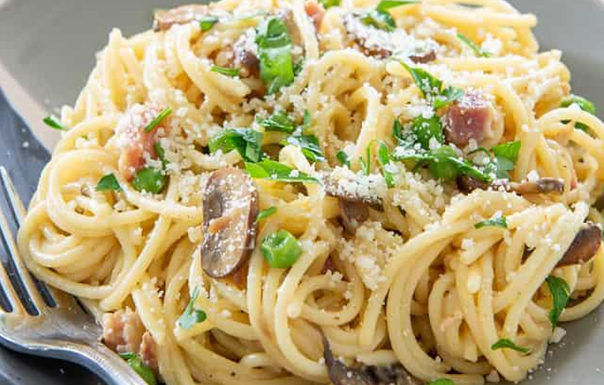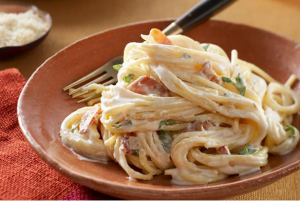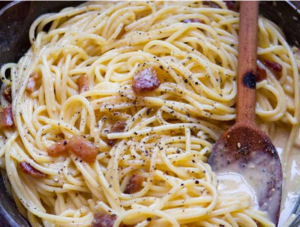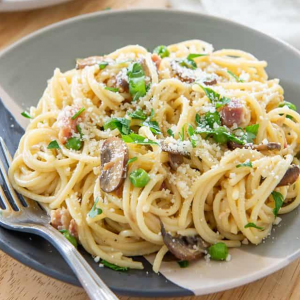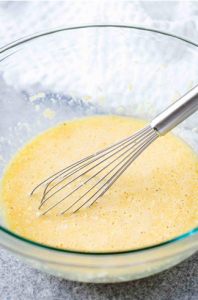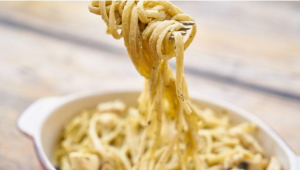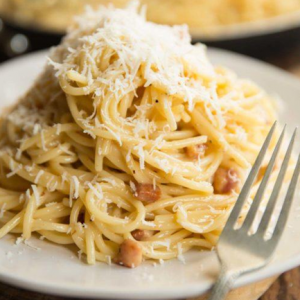Even if you are not a great connoisseur of Mediterranean cuisine, you must have heard of Spaghetti Carbonara. Their popularity is due to their unique taste, and in the home menu they are necessary because of their easy preparation. Spaghetti Carbonara rightly spreads the fame of the Italian culinary tradition around the world and if you haven’t succumbed to their charm so far, it’s high time to give them a chance.
Origin and history of Carbonara
As with many other known recipes, the history of the dish is not entirely clear. Most sources trace its origins to the Lazio region, but there are other opinions on the matter.
Pasta Carbonara is part of a family of dishes that includes pasta with bacon, cheese and pepper. The most common theory is that workers who mined charcoal in the mountains were the first to prepare this dish. Working in areas far from home required them to stock up on durable foods such as dry pasta, salted pork cheeks, olive oil, cheese, and black pepper.
These products are the basis of Pasta Carbonara, and the name of the dish translates as Coal Pasta. It is even suggested that the name of the pasta dish is a tribute to the secret society Carbonari (coal miners), created in the early stages of Italian unification in the early 19th century. Some believe that Carbonara pasta was a favorite recipe for shepherds in the Apennine Mountains near Rome, who cooked it in the field.
According to another hypothesis, this type of pasta is a Neapolitan dish. Proponents of this theory point to the fact that Hippolyto’s book Cavalanti’s Theoretical and Practical Cuisine of 1837 describes traditional Neapolitan dishes that contain almost the same ingredients used for Carbonara spaghetti.
In any case, the question of when it was prepared is debatable, because the name is not mentioned anywhere until 1930. The proof is that it does not appear in a book on Roman cuisine by Ada Bodi, published in 1930. The names pasta alla carbonara and spaghetti alla carbonara were not recorded before World War II.
The name carbonara first appeared in 1950, when it was described in the Italian newspaper La Stampa as a dish sought after by American officers after the liberation of Rome from the Allies in 1944. According to some sources, the recipe itself was invented by chance. American soldiers who added to the spaghetti their military rations of bacon and powdered eggs. The dish turned out to be successful and required few products so it quickly became popular outside Italy and even overseas.
Another version states that it is more likely to be an urban “dish from Rome, popularized by a Roman restaurant of the same name.
In 1954 the name Carbonara was included by Elizabeth David in a book on Italian food in English, published in Great Britain. The recipe has changed over the years. It is believed that the dish reached its modern look with its current name in the middle of the 20th century. Apart from spaghetti, Carbonara sauce goes well with other pasta products such as
- foam
- rigatons
- fettuccine
- linguine
- bucatini, etc.
The secret of Carbonara sauce
Although at first glance the ingredients of Carbonara sauce are few and quite simple, they are also controversial. In the Roman region, the recipe includes Guanciale (pork cheek bacon), eggs, Pectoralino Romano sheep cheese from the Lazio region and black pepper. Guanchale are pork cheeks that are rubbed with salt, ground black or red pepper and dried in for three weeks. The taste of this delicacy from Central Italy is stronger, than other pork products, such as pancetta, and its texture is more delicate.
Cream is not used in most Italian recipes, although there are exceptions. In northern Italy, the recipe includes cream and garlic, and instead of Pecorino sheep cheese, they use Parmigiano cow cheese. Sometimes both cheeses are added – Pecorino and Parmigiano.
Pork breast panties or other types of smoked bacon are often used instead of guanchale. And in general, recipes can be as many as the imaginative cooks who prepare them. Onions and garlic are found in recipes mainly outside Italy. Nowadays, other products such as broccoli, green peas, mushrooms, leeks, etc. are often added. Add green spices such as basil or parsley.
For the original Carbonara sauce, the bacon should be cut into cubes, not into thin slices or strips, and fried in its own fat. Because, as it has already become clear, Pasta alla Carbonara means “Coal Pasta” it goes very well with black pepper. The original sauce is made from raw egg yolks at room temperature. To them is added the egg white (or two eggs) mixed with freshly grated Pecorino Romano cheese, a little salt and a lot of black pepper.
Then the egg mixture is mixed together with the fried bacon and some of the water from the spaghetti cooking and the sauce spreads its unique aroma around.
Preparation and serving of spaghetti Carbonara
To make spaghetti perfect, they must be made from durum wheat and prepared to a degree called al dente. This literally means “to the tooth,” and the subtlety is that a little firmness is maintained in the middle of the paste. Spaghetti should usually be boiled in plenty of water. They are placed in moderately salted boiling water.
While they are cooking, prepare the guanchale sauce, which is fried briefly. The mixture of yolks, grated Pecorino (or a mixture with Parmesan) and a sufficient amount of ground black pepper is added to the fried bacon. Drained but still very hot pasta, mix with egg sauce, cheese and bacon and stir. Finally the spaghetti is sprinkled generously with still grated Pecorino and served immediately.
The question is often asked how to properly consume spaghetti, because long tubes easily slip out of the appliance and confusing situations can occur in a public place. There are different “schools” for eating spaghetti, the main difference being that they can only be served with a fork or with a fork and spoon. If you use only a fork, it should be held in the right hand.
It is correct to wrap around it 2 or 3 long spaghetti. In southern Italy and in some other countries such as the USA, for example, spaghetti is more often served with a fork and spoon. In this case, the fork is in the right hand, and in the left is the spoon, and with it you help to rotate the spaghetti around the fork.
Receptions
Classic Spaghetti alla Carbonara
Products:
- 1 packet of durum wheat spaghetti
- 150 g guanchale (pork cheek bacon)
- 4 yolks
- 100 g of Pecorino Romano type cheese
- black pepper
- sol
Preparation:
The spaghetti is put to boil in salted water. Bacon is cut into small cubes and fried without fat until golden. Beat the yolks well. Add the grated Pecorino cheese and season with black pepper.
Boiled spaghetti to the degree of den dente is removed from the hot water and transferred to the pan with the bacon, pouring a little of the boiling water. Remove the bowl of bacon and spaghetti from the heat and immediately add the egg sauce. Stir until the ingredients are well mixed, to obtain a harmonious taste and aroma. Spaghetti is served hot and sprinkled with cheese and pepper.
Spaghetti Carbonara with cream
Products:
- 1 packet of spaghetti
- 200 ml cream
- 300 g smoked bacon
- 2 egg yolks
- 40 ml of olive oil
- 150 g of Parmesan cheese
- 2 cloves garlic
- 2 tablespoons olive oil
- sol
- black pepper
Preparation:
Let the spaghetti boil in salted water. Meanwhile, cut the bacon and garlic cloves into small pieces and fry them in olive oil. Add the cream and simmer for a few minutes. Then add the well-mixed yolks. Leave on very low heat for another 1-2 minutes, stirring constantly to prepare the yolk. Finally, add black pepper to taste.
Transfer the cooked spaghetti to the pan and mix with the sauce. Pour them immediately into warmed plates and sprinkle with grated Parmesan.


